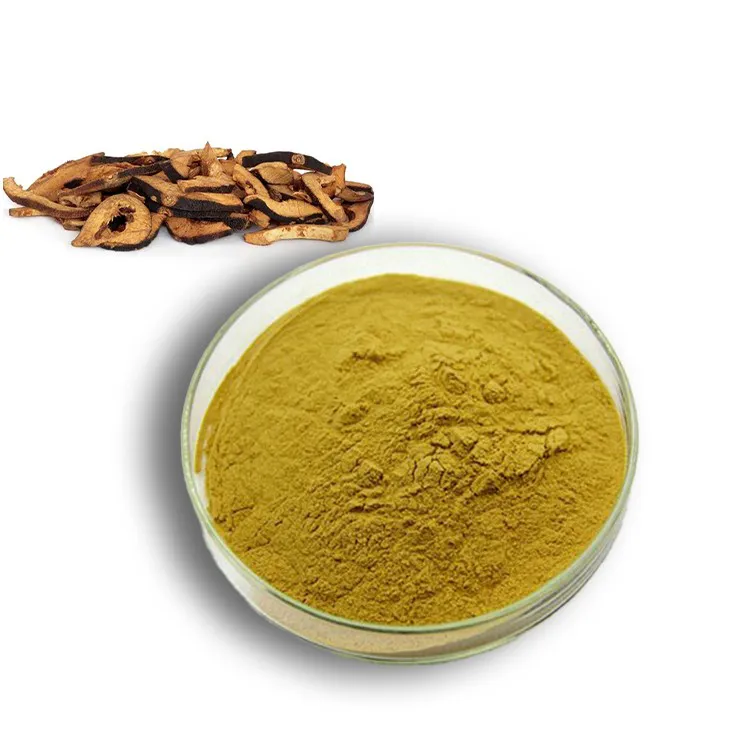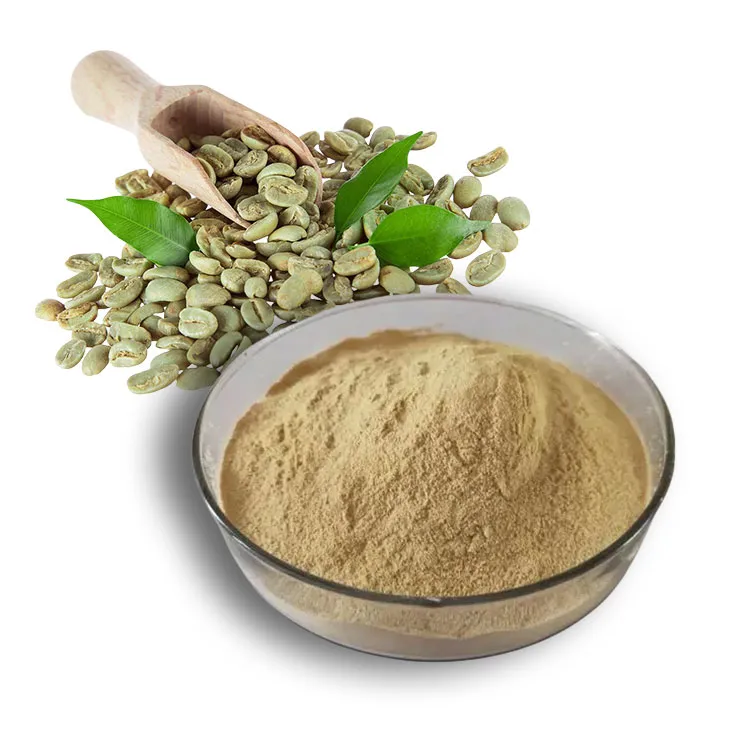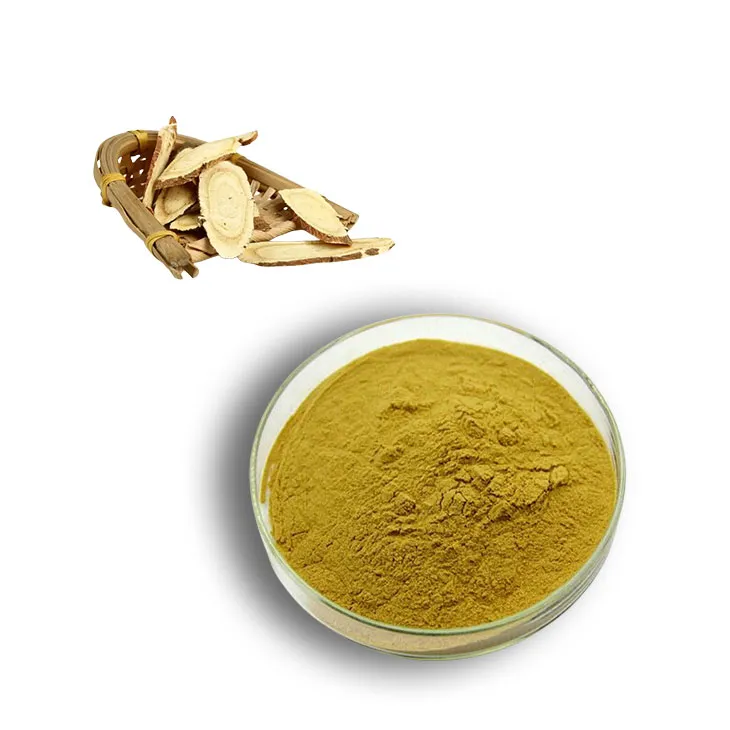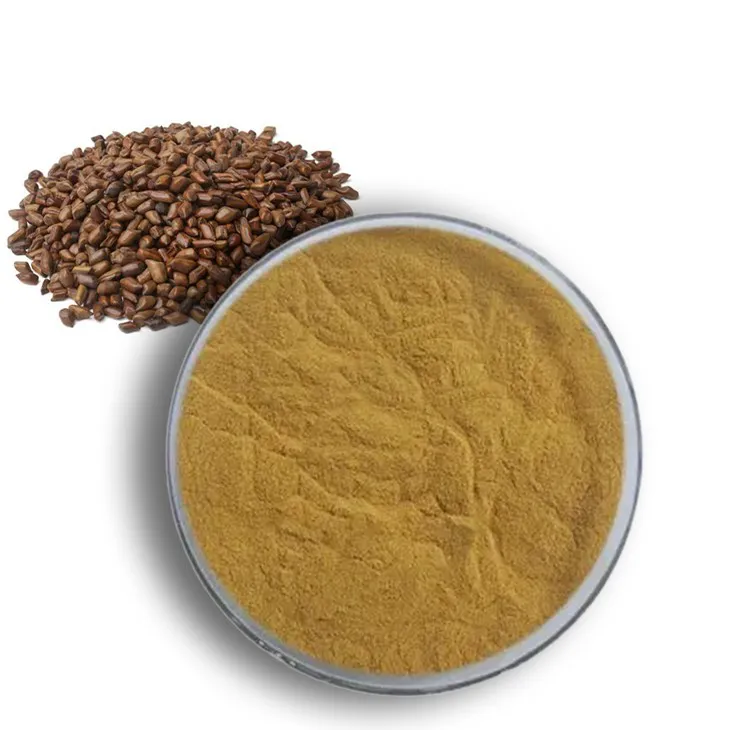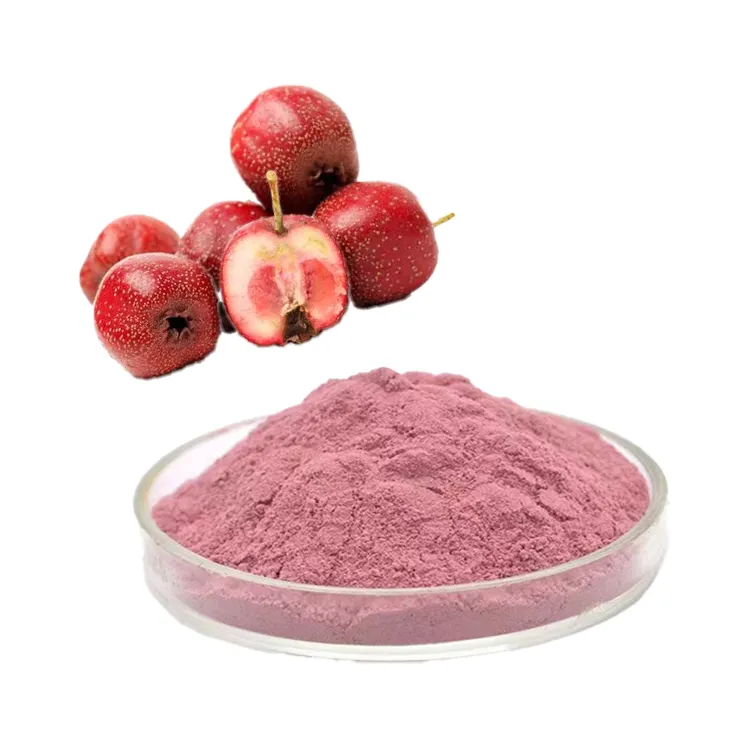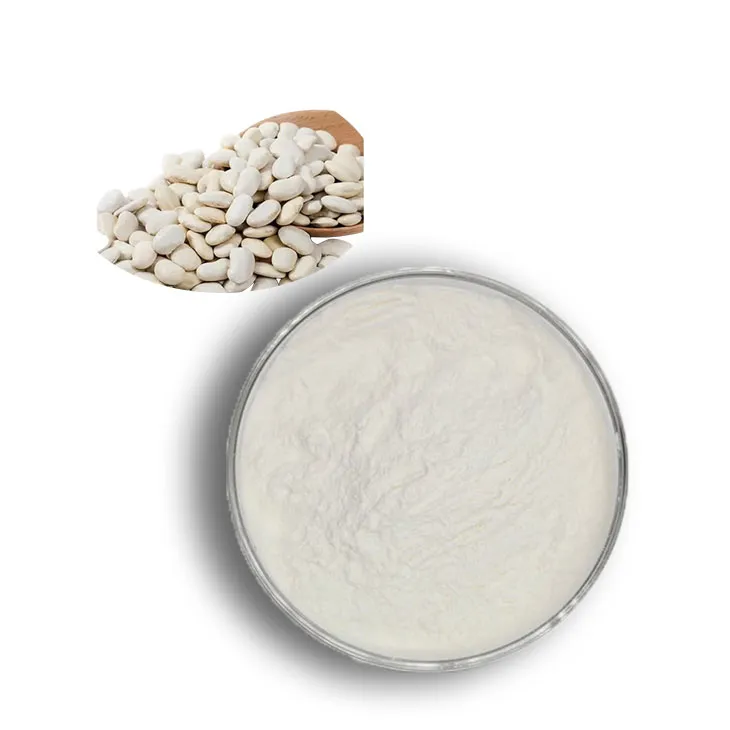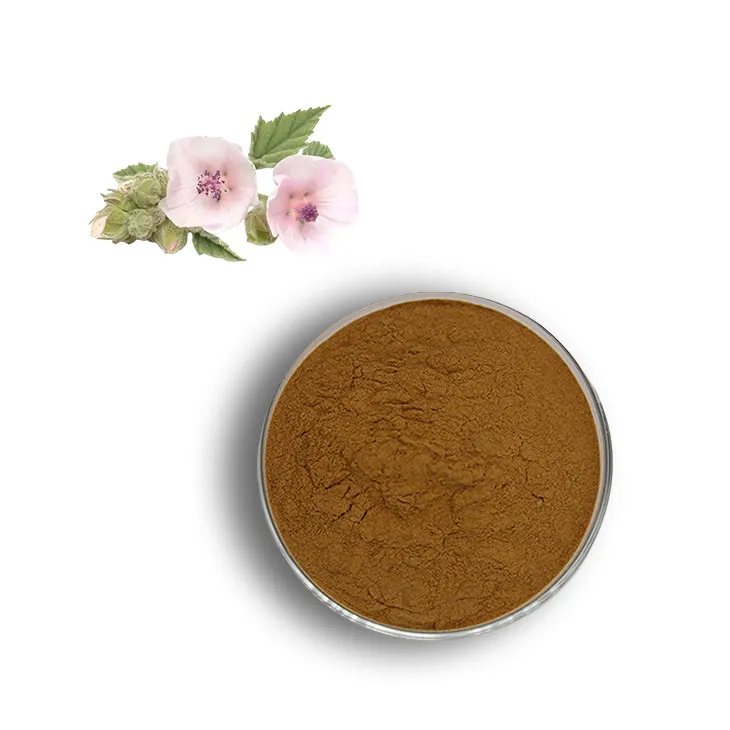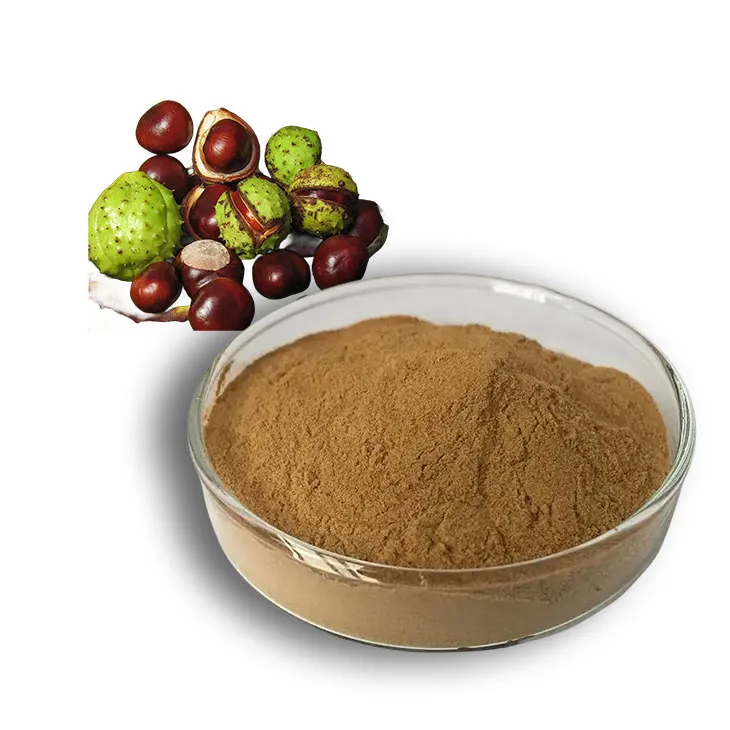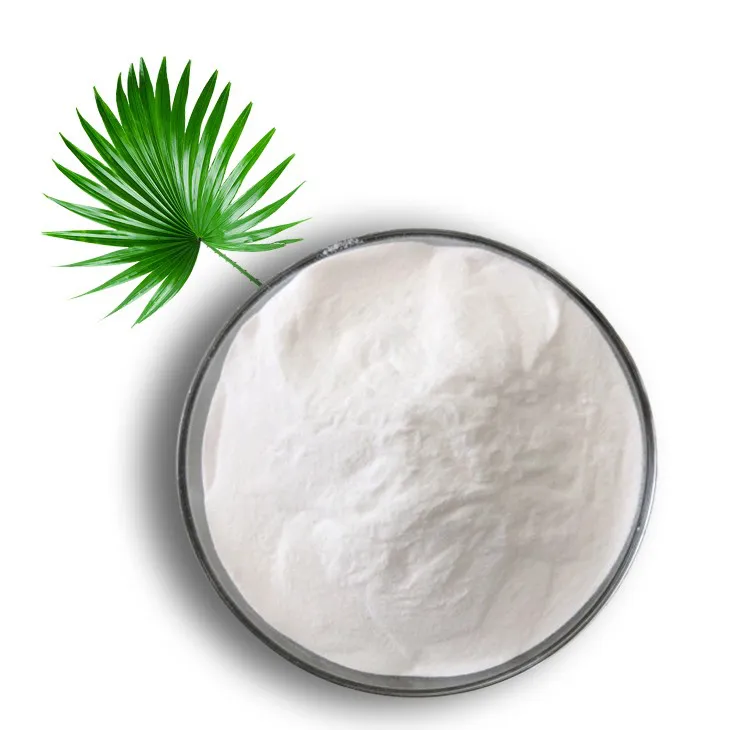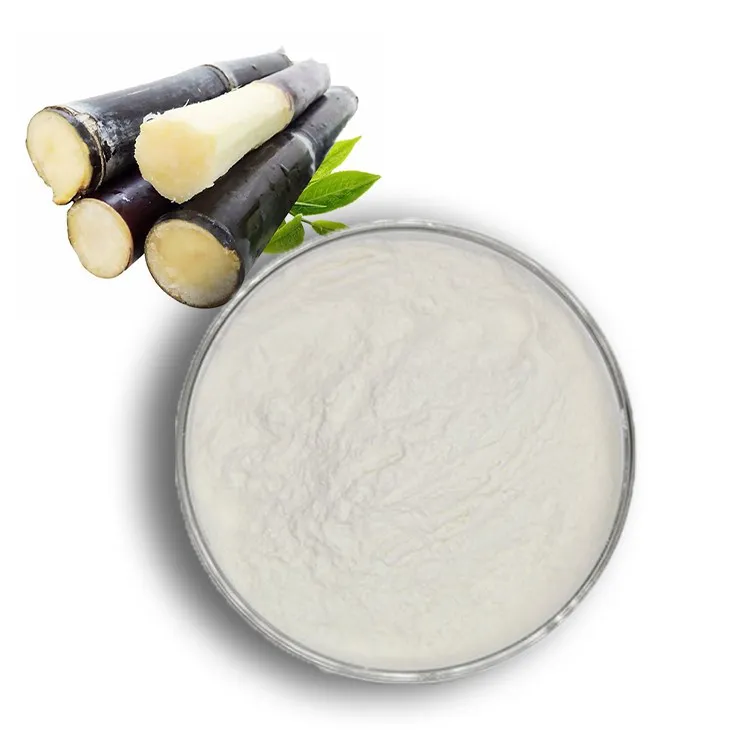- 0086-571-85302990
- sales@greenskybio.com
how can dna be extracted from a plant cell?
2023-09-26
1. Importance of DNA in Plant Biology
1. Importance of DNA in Plant Biology
DNA, or deoxyribonucleic acid, is the fundamental molecule of heredity in all living organisms, including plants. It carries the genetic information necessary for the growth, development, reproduction, and adaptation of plants to their environment. Understanding the importance of DNA in plant biology is crucial for various scientific and practical applications.
1.1 Genetic Blueprint
DNA serves as the genetic blueprint for plants, encoding the instructions for the synthesis of proteins, which are the workhorses of the cell. These proteins perform a myriad of functions, from structural support to catalyzing biochemical reactions.
1.2 Genetic Diversity
The diversity of DNA sequences among different plant species and even within the same species contributes to the vast array of plant forms and functions observed in nature. This genetic diversity is essential for the survival and evolution of plant populations.
1.3 Breeding and Crop Improvement
Knowledge of plant DNA is vital for plant breeding programs, where desirable traits such as disease resistance, drought tolerance, and higher yield are selected and combined through controlled crosses.
1.4 Conservation of Plant Species
DNA analysis is a powerful tool for identifying and conserving rare and endangered plant species, helping to preserve biodiversity and the ecosystem services that plants provide.
1.5 Study of Evolution
Comparative DNA studies allow scientists to trace the evolutionary relationships among different plant species, providing insights into the history of life on Earth.
1.6 Functional Genomics
The ability to extract and analyze DNA from plants enables researchers to delve into the functional genomics of plants, understanding how genes are regulated and interact with each other and the environment.
1.7 Biotechnology and Genetic Engineering
DNA extraction is a foundational step in the field of biotechnology, where genetic engineering techniques are used to create plants with novel traits, such as improved nutritional content or resistance to pests and diseases.
1.8 Forensic Botany
In forensic investigations, DNA extracted from plant material can be used to solve crimes, such as identifying the source of illegal drugs derived from plants or linking a suspect to a crime scene through plant traces.
1.9 Education and Public Understanding
Studying DNA in plant biology helps to educate the public about the importance of genetics and heredity, fostering a greater appreciation for the complexity and beauty of the natural world.
In summary, DNA extraction from plant cells is a fundamental technique in modern biology, with wide-ranging applications that contribute to scientific knowledge, agricultural productivity, environmental conservation, and biotechnological innovation.
2. Overview of Plant Cell Structure
2. Overview of Plant Cell Structure
Plant cells, the fundamental units of life in the plant kingdom, are remarkably complex and highly specialized for their functions. Understanding the structure of plant cells is crucial for the extraction of DNA, as it helps in devising methods that effectively break down the cell walls and membranes to access the genetic material within.
Cell Wall: The plant cell is encased in a rigid cell wall composed primarily of cellulose, hemicellulose, and pectin. This wall provides structural support and protection, but it also presents a significant barrier to the extraction of DNA due to its strength and resistance to degradation.
Plasma Membrane: Inside the cell wall is the plasma membrane, a selectively permeable barrier that controls the movement of substances in and out of the cell. This membrane must be breached during DNA extraction to access the cytoplasm and organelles.
Cytoplasm: The cytoplasm is a gel-like substance within the cell, containing the organelles and providing the medium for biochemical reactions. It also contains enzymes and other molecules that can interfere with DNA extraction if not properly managed.
Nucleus: The nucleus is a vital organelle that houses the cell's genetic material, including DNA. It is surrounded by a double membrane called the nuclear envelope, which also needs to be disrupted to access the DNA.
Vacuole: The central vacuole is a large, fluid-filled organelle that stores water, nutrients, and waste products. It can also contain enzymes that may degrade DNA if not carefully handled during extraction.
Mitochondria and Chloroplasts: These organelles contain their own DNA and are involved in energy production and photosynthesis, respectively. Their presence adds to the complexity of DNA extraction, as their DNA must be differentiated from the nuclear DNA.
Endoplasmic Reticulum and Golgi Apparatus: The endoplasmic reticulum is involved in protein synthesis and lipid metabolism, while the Golgi apparatus is responsible for modifying, sorting, and packaging proteins and lipids for secretion. These organelles can also contain enzymes that may interfere with DNA extraction.
The structure of plant cells is intricate and designed for optimal function within the plant's environment. When extracting DNA from plant cells, it is essential to consider these structural components and how they may impact the process. The methods used for DNA extraction must be tailored to overcome the challenges posed by the cell wall, plasma membrane, and other cellular components to successfully isolate pure, high-quality DNA for further analysis and applications.
3. Collection of Plant Material
3. Collection of Plant Material
The process of DNA extraction from plant cells begins with the careful collection of plant material. This step is critical because the quality and type of plant material can significantly affect the success of DNA extraction and the purity of the final product. Here are some key considerations for the collection of plant material:
Selection of Plant Tissue:
- Choose healthy, disease-free plant tissues to ensure that the DNA is not contaminated with pathogens or degraded by disease processes.
- Young, rapidly growing tissues such as leaves, buds, or seedlings are often preferred due to their high cellular activity and DNA content.
Time of Collection:
- The time of day can affect the metabolic state of the plant and, consequently, the quality of the DNA. Some researchers prefer to collect samples in the morning when the plant's metabolic activity is lower.
Environmental Conditions:
- Consider the environmental conditions at the time of collection, such as temperature, humidity, and light exposure, as these can influence the plant's physiological state.
Sterile Techniques:
- Use sterile tools and containers to avoid contamination with microorganisms or other foreign DNA.
Sample Size:
- The amount of plant material needed will depend on the DNA extraction method used. However, it is generally advisable to collect a sufficient amount to allow for multiple extractions if necessary.
Storage and Transportation:
- If immediate processing is not possible, store the collected samples at low temperatures (usually on ice or in a cooler) to preserve the integrity of the DNA.
- Transport the samples to the laboratory as quickly as possible to minimize degradation.
Documentation:
- Keep detailed records of the plant species, collection site, date, and any other relevant information. This documentation is essential for traceability and for future reference.
Ethical and Legal Considerations:
- Ensure that the collection of plant material complies with local regulations and ethical guidelines, especially for endangered or protected species.
Proper collection of plant material is the foundation for successful DNA extraction. By paying attention to these details, researchers can maximize the chances of obtaining high-quality DNA that is suitable for various downstream applications in plant biology research.
4. Preparation of Plant Cells for DNA Extraction
4. Preparation of Plant Cells for DNA Extraction
The extraction of DNA from plant cells is a critical process that requires careful preparation to ensure the integrity and quality of the genetic material obtained. This section will delve into the steps necessary to prepare plant cells for DNA extraction.
4.1 Selection of Plant Tissue
The first step in the preparation process is the selection of appropriate plant tissue. Different tissues may yield varying amounts of DNA, so it is essential to choose a tissue that is rich in cells and has minimal amounts of secondary metabolites that could interfere with the extraction process.
4.2 Surface Sterilization
Plant tissues are often exposed to various microorganisms and environmental contaminants. Therefore, it is crucial to sterilize the plant material to prevent contamination during the DNA extraction process. This can be done using a series of chemical treatments, such as soaking in a bleach solution followed by rinsing with sterile water.
4.3 Dissection of Plant Material
After sterilization, the plant material is dissected to isolate the cells of interest. This may involve removing the outer layers of leaves, peeling back bark, or dissecting seeds or roots. The dissection should be done in a sterile environment to maintain cleanliness and prevent contamination.
4.4 Cell Lysis
The next step is to break open the plant cells, a process known as cell lysis. This can be achieved through various methods, including chemical lysis using detergents or enzymatic lysis using cell wall-degrading enzymes. The goal is to release the cellular contents, including the DNA, without causing extensive degradation.
4.5 Removal of Cell Debris
Following cell lysis, it is necessary to remove any remaining cell debris to prevent interference with subsequent DNA extraction steps. This can be done through filtration or centrifugation to separate the cellular debris from the lysate containing the DNA.
4.6 Nucleic Acid Precipitation
To concentrate the DNA, precipitation methods can be employed. The addition of salts or organic solvents can cause the DNA to precipitate out of the solution, making it easier to isolate and purify.
4.7 Buffer Equilibration
Before proceeding to the DNA extraction, it is important to equilibrate the lysate with a suitable buffer. This helps to stabilize the DNA and prepare it for the purification steps that follow.
The preparation of plant cells for DNA extraction is a meticulous process that sets the foundation for the success of the entire procedure. Proper preparation ensures that the DNA obtained is of high quality and suitable for various downstream applications, such as PCR, sequencing, or genetic analysis.
5. Chemical Treatment: Enzymatic Digestion
5. Chemical Treatment: Enzymatic Digestion
Enzymatic digestion is a critical step in the DNA extraction process from plant cells. This step involves the use of enzymes to break down the complex cellular components and facilitate the release of DNA. The primary enzymes used in this process are:
Cellulase
Cellulase enzymes are used to break down cellulose, which is a major component of the plant cell wall. By degrading cellulose, cellulase helps to weaken the cell wall structure, making it easier to access the DNA within the cell.
Pectinase
Pectinase enzymes target pectin, another structural component of the plant cell wall. Pectin is responsible for the gel-like consistency of the cell wall, and its degradation by pectinase enzymes further aids in the breakdown of the cell wall.
Protease
Protease enzymes are used to digest proteins, particularly those that are associated with the cell membrane and the nuclear envelope. By breaking down these proteins, protease enzymes help to release the DNA from its protective structures.
DNase Inhibitors
To prevent the degradation of the extracted DNA by endogenous DNases, DNase inhibitors are often added during the enzymatic digestion process. These inhibitors bind to DNases and block their activity, ensuring that the DNA remains intact during the extraction process.
The enzymatic digestion process typically involves the following steps:
1. Buffer Preparation: A suitable buffer is prepared to maintain optimal pH and ionic strength for the enzymes to function effectively.
2. Enzyme Mixture: The appropriate enzymes are mixed in the buffer to create an enzyme cocktail that will be used to digest the plant material.
3. Incubation: The plant material is incubated with the enzyme cocktail under controlled conditions of temperature and pH. This allows the enzymes to break down the cell wall and other cellular components.
4. Monitoring: The progress of the enzymatic digestion is monitored to ensure that the process is proceeding as expected. This may involve checking the viscosity of the sample or using microscopic examination to assess the breakdown of the cell wall.
5. Termination: Once the enzymatic digestion is complete, the reaction is stopped by heating the sample or by adding a stopping buffer.
Enzymatic digestion is a versatile and efficient method for breaking down plant cell structures and releasing DNA. By using a combination of enzymes and carefully controlling the reaction conditions, it is possible to obtain high-quality DNA that is suitable for a wide range of applications.
6. Mechanical Disruption: Physical Methods
6. Mechanical Disruption: Physical Methods
DNA extraction from plant cells can also be achieved through mechanical disruption, which involves the physical breakdown of cell walls and membranes to release the DNA. This method is particularly useful for hard or woody plant tissues that are resistant to enzymatic digestion. Here are some common mechanical disruption techniques used in plant DNA extraction:
6.1 Bead Milling
Bead milling is a high-speed mechanical process that uses small beads to grind plant tissues into fine particles. The beads collide with the plant material, breaking the cell walls and releasing the DNA. This method is efficient and can be scaled up for large-scale DNA extraction.
6.2 Mortar and Pestle
A traditional method, using a mortar and pestle to grind plant material into a fine powder can be an effective way to disrupt plant cell walls. The powder is then treated with lysis buffers to release the DNA.
6.3 Freezer Mill
Freezing the plant material and then grinding it in a freezer mill can be an effective way to break down cell walls. The low temperature helps to preserve the integrity of the DNA during the mechanical disruption process.
6.4 Ultrasonication
Ultrasonication uses high-frequency sound waves to create microscopic bubbles in the liquid surrounding the plant material. The implosions of these bubbles generate shear forces that disrupt the cell walls, releasing the DNA.
6.5 Pressure Homogenization
This method involves subjecting the plant material to high pressure, which forces it through a small orifice, causing the cells to rupture and release their contents, including DNA.
6.6 Enzyme-Assisted Mechanical Disruption
In some cases, mechanical disruption is combined with enzymatic digestion. The enzymes soften the cell walls, making them more susceptible to mechanical forces, which can enhance the efficiency of DNA release.
6.7 Advantages and Disadvantages
- Advantages: Mechanical disruption is a straightforward and cost-effective method that can be adapted to various types of plant tissues. It does not require the use of potentially expensive enzymes and can be performed with basic laboratory equipment.
- Disadvantages: The process can be time-consuming, especially for large-scale extractions. It may also result in the co-extraction of other cellular components, which can interfere with subsequent DNA analysis.
Mechanical disruption is a valuable tool in the DNA extraction process, particularly when dealing with plant materials that are not easily broken down by enzymatic methods alone. By combining mechanical and enzymatic approaches, researchers can optimize the extraction process to obtain high-quality DNA for various applications in plant biology.
7. Isolation of Nuclei and DNA
7. Isolation of Nuclei and DNA
After the plant cells have been prepared and treated with enzymes and physical methods, the next step in the DNA extraction process is the isolation of nuclei and DNA. This step is crucial as it allows for the separation of DNA from other cellular components, which can interfere with downstream applications.
Nuclear Isolation:
The isolation of nuclei involves breaking open the cells to release their nuclei. This can be achieved through various techniques such as:
- Hydrolysis: Using mild alkaline solutions to weaken the cell wall and allow for the release of nuclei.
- Osmotic Shock: Applying a hypertonic solution that causes cells to swell and burst, releasing their contents.
DNA Extraction Techniques:
Once the nuclei are isolated, the DNA within them must be extracted. Several methods are employed for this purpose:
- Salting Out: Adding high concentrations of salt to precipitate DNA, which can then be separated from the solution by centrifugation.
- Organic Extraction: Using organic solvents like phenol or chloroform to separate DNA from proteins and lipids. The DNA will partition into the organic phase, which can be separated and then precipitated using alcohol.
- Column-based Purification: Employing silica-based or other affinity columns that selectively bind DNA, allowing for purification through a series of washes and elution steps.
DNA Recovery:
After extraction, the DNA is usually precipitated using alcohol or isopropanol and then pelleted by centrifugation. The pellet, which contains the DNA, is then washed with cold alcohol to remove any remaining contaminants and resuspended in a suitable buffer.
Considerations for Isolation:
- Efficiency: The efficiency of DNA extraction can be influenced by the quality of the initial plant material, the effectiveness of the enzymatic and mechanical treatments, and the purity of the reagents used.
- Purity: Contamination with proteins, polysaccharides, and other cellular debris can hinder the success of subsequent molecular biology techniques. Therefore, careful attention must be paid to the purification steps.
- Integrity: The integrity of the DNA is paramount, as damaged or fragmented DNA can affect its usability in various applications.
In summary, the isolation of nuclei and DNA from plant cells is a critical step that requires careful consideration of the techniques used to ensure the purity and integrity of the extracted DNA. This step lays the foundation for the subsequent purification and quality assessment processes, ultimately enabling the successful application of plant DNA in various fields of research and biotechnology.
8. Purification of DNA
8. Purification of DNA
After the isolation of nuclei and DNA, the next critical step in the DNA extraction process is purification. This step is essential to remove any remaining cellular debris, proteins, and other contaminants that could interfere with downstream applications such as PCR, sequencing, or cloning. There are several methods used for the purification of DNA from plant cells, and they include:
8.1. Gel Electrophoresis
Gel electrophoresis is a common technique used to separate and purify DNA based on its size. After the DNA is extracted, it can be loaded onto an agarose gel and subjected to an electric field. The DNA will migrate through the gel, with smaller fragments moving faster than larger ones. This allows for the visualization and isolation of pure DNA bands.
8.2. Column-based Purification
Column-based purification methods are widely used for DNA purification due to their efficiency and ease of use. These methods involve the use of spin columns or affinity columns that selectively bind DNA while allowing other contaminants to pass through. The DNA is then eluted in a small volume of buffer, resulting in a highly purified DNA sample.
8.3. Solvent Extraction
Solvent extraction is another method used to purify DNA. This involves the use of organic solvents, such as phenol or chloroform, which can dissolve proteins and other contaminants while leaving the DNA in the aqueous phase. The DNA can then be separated from the organic phase and further purified.
8.4. Precipitation
Precipitation is a simple and effective method for purifying DNA. It involves the addition of a salt or alcohol to the DNA solution, which causes the DNA to precipitate out of the solution. The precipitated DNA can then be collected by centrifugation and resuspended in a suitable buffer.
8.5. Quality Control
After purification, it is important to assess the quality of the extracted DNA. This can be done using techniques such as spectrophotometry, which measures the absorbance of the DNA at specific wavelengths, or gel electrophoresis, which allows for the visualization of the DNA's size and purity.
8.6. Advantages and Limitations
Each purification method has its advantages and limitations. For example, gel electrophoresis can provide high-resolution separation of DNA fragments but may not be suitable for large-scale purification. Column-based purification offers high purity and ease of use but can be more expensive. Solvent extraction and precipitation are cost-effective but may require additional steps for complete purification.
In conclusion, the purification of DNA is a crucial step in the extraction process that ensures the quality and integrity of the DNA for downstream applications. By selecting the appropriate purification method, researchers can obtain high-quality DNA samples that are suitable for a wide range of plant biology studies.
9. Quality Assessment of Extracted DNA
9. Quality Assessment of Extracted DNA
After the DNA extraction process is complete, it is crucial to assess the quality of the extracted DNA to ensure that it is suitable for subsequent applications such as PCR, sequencing, or cloning. Several factors are considered when evaluating the quality of DNA, including purity, concentration, integrity, and the presence of contaminants.
Purity Assessment:
Purity is determined by the absence of proteins, polysaccharides, and other impurities that might interfere with downstream applications. The most common method to assess purity is by measuring the absorbance ratio at 260 nm (for DNA) and 280 nm (for proteins) using a spectrophotometer. A ratio of 1.8 to 2.0 is generally considered acceptable for pure DNA.
Concentration Measurement:
The concentration of the extracted DNA is typically measured using a spectrophotometer, which provides an optical density (OD) reading at 260 nm. The concentration is calculated using the formula: \( \text{Concentration (ng/μL)} = \frac{\text{OD260}}{50} \times 50 \), where 50 is the molar extinction coefficient for double-stranded DNA.
Integrity Assessment:
The integrity of the DNA is assessed by visualizing it on an agarose gel electrophoresis. High-quality DNA should show a clear, bright band without smearing or degradation, indicating that the DNA is intact and not fragmented.
Presence of Contaminants:
Contaminants such as RNA, proteins, or phenolic compounds can be checked by comparing the electrophoretic patterns on a gel. The presence of RNA can be further confirmed by treating the DNA with DNase-free RNase and re-running the gel.
Enzymatic Activity Check:
To ensure that the DNA is free from DNases, which could degrade the DNA during storage or use, an enzymatic activity check can be performed. This involves treating the DNA with DNases and then checking for any degradation on a gel.
Long-term Storage Considerations:
DNA should be stored at appropriate conditions (typically -20°C for short-term and -80°C for long-term storage) to maintain its integrity. Periodic quality checks are recommended to ensure that the DNA remains in good condition over time.
Automation and High-throughput Quality Assessment:
With the advancement in technology, automated systems and high-throughput methods have been developed for DNA quality assessment. These systems can process multiple samples simultaneously, providing rapid and consistent results.
In conclusion, the quality assessment of extracted DNA is a critical step in the DNA extraction process. It ensures that the DNA is suitable for further analysis and prevents potential issues that could arise from using poor-quality DNA in downstream applications. As technology continues to evolve, the methods for assessing DNA quality are becoming more efficient and reliable, facilitating better research outcomes in plant biology and other fields.
10. Applications of Plant DNA Extraction
10. Applications of Plant DNA Extraction
DNA extraction from plant cells is a fundamental technique with a wide array of applications in various fields of biological and agricultural research. Here are some of the key applications:
1. Genetic Diversity Studies: DNA extraction is essential for analyzing genetic diversity within and between plant populations. This helps in understanding the genetic basis of traits and in the conservation of plant genetic resources.
2. Plant Breeding: DNA analysis is crucial in modern plant breeding programs. It allows breeders to select for desirable traits and to avoid undesirable ones, thus accelerating the breeding process and improving crop varieties.
3. Disease and Pest Resistance: By extracting and analyzing DNA, researchers can identify genes that confer resistance to diseases and pests, which can then be incorporated into new plant varieties.
4. Phylogenetic Analysis: DNA extracted from plants is used to construct phylogenetic trees, which help in understanding the evolutionary relationships among different plant species.
5. Genetic Engineering: DNA extraction is a prerequisite for genetic engineering, where genes of interest are inserted into plants to create genetically modified organisms (GMOs) with specific desired traits.
6. Crop Improvement: DNA analysis can identify genes responsible for important agronomic traits, such as yield, nutritional content, and stress tolerance, leading to the development of improved crop varieties.
7. Forensic Botany: DNA extracted from plants can be used in forensic investigations to identify the source of plant material found at crime scenes.
8. Environmental Monitoring: Plant DNA can be used to monitor the health of ecosystems and to detect changes in plant communities over time.
9. Conservation Biology: DNA analysis helps in the identification of rare and endangered plant species, which is crucial for their conservation and management.
10. Education and Research: DNA extraction is a common laboratory exercise in educational settings, teaching students about molecular biology techniques and the structure of DNA.
11. Bioinformatics: The data generated from plant DNA extraction feeds into bioinformatics, where computational methods are used to analyze and interpret the genetic information.
12. Development of Molecular Markers: DNA markers can be developed from extracted DNA to track specific genes or to facilitate the identification of individuals within a species.
13. Metagenomics: Plant DNA can be part of environmental DNA (eDNA) studies, which involve the genetic analysis of all the organisms in a given environment.
14. Food Safety and Authenticity: DNA testing can be used to ensure the safety of food products and to verify the authenticity of plant-based ingredients.
15. Plant-Microbe Interactions: DNA extraction from plants can help study the interactions between plants and their associated microbes, which play a crucial role in plant health and productivity.
The applications of plant DNA extraction are vast and continue to expand as new technologies and techniques are developed. This process remains a cornerstone of modern plant biology, enabling researchers to delve deeper into the genetic makeup of plants and to apply this knowledge for the betterment of agriculture and the environment.
11. Conclusion and Future Perspectives
11. Conclusion and Future Perspectives
The extraction of DNA from plant cells is a fundamental technique in plant biology and genetics, with applications ranging from molecular identification to genetic engineering. The process, as outlined in the previous sections, involves careful selection of plant material, preparation of cells, enzymatic digestion, mechanical disruption, isolation of nuclei and DNA, and purification and assessment of the extracted DNA.
As we conclude this discussion, it is essential to recognize the importance of continuous advancements in DNA extraction techniques. The development of more efficient, less time-consuming, and cost-effective methods is crucial for accommodating the increasing demand for DNA analysis in various fields, including agriculture, medicine, and environmental science.
Future perspectives in the field of plant DNA extraction include:
1. Technological Innovations: The integration of new technologies such as microfluidics, lab-on-a-chip systems, and nanotechnology could revolutionize the way DNA is extracted, making the process more precise and scalable.
2. Improvement of Current Protocols: Ongoing research aims to refine existing protocols to minimize the use of hazardous chemicals, reduce the time required for extraction, and increase the yield and purity of the DNA.
3. Automation: The automation of DNA extraction processes will reduce human error, increase throughput, and standardize procedures across different laboratories.
4. Environmental Considerations: As the focus on sustainability grows, there will be an emphasis on developing greener methods for DNA extraction that minimize waste and reduce the environmental impact.
5. Genomics and Bioinformatics: The extraction of plant DNA is a precursor to genomic analysis. The integration of bioinformatics tools will enhance our ability to analyze and interpret the genetic data obtained from plant DNA.
6. Education and Training: As these techniques become more prevalent, there will be a need for comprehensive education and training programs to ensure that researchers and technicians are well-equipped to perform DNA extractions and subsequent analyses.
7. Ethical Considerations: With the increasing capabilities of genetic manipulation, ethical considerations will play a significant role in guiding the application of DNA extraction and genetic engineering in plants.
8. Regulatory Frameworks: As new methods and applications emerge, there will be a need for updated regulatory frameworks to ensure the safe and responsible use of genetic technologies.
In conclusion, the extraction of DNA from plant cells is a dynamic and evolving field. As we look to the future, the potential for innovation and discovery in plant biology is vast, with DNA extraction techniques playing a central role in unlocking the secrets of plant genetics and contributing to advancements in various scientific and practical applications.
- ▶ Hesperidin
- ▶ citrus bioflavonoids
- ▶ plant extract
- ▶ lycopene
- ▶ Diosmin
- ▶ Grape seed extract
- ▶ Sea buckthorn Juice Powder
- ▶ Beetroot powder
- ▶ Hops Extract
- ▶ Artichoke Extract
- ▶ Reishi mushroom extract
- ▶ Astaxanthin
- ▶ Green Tea Extract
- ▶ Curcumin Extract
- ▶ Horse Chestnut Extract
- ▶ Other Problems
- ▶ Boswellia Serrata Extract
- ▶ Resveratrol Extract
- ▶ Marigold Extract
- ▶ Grape Leaf Extract
- ▶ blog3
- ▶ Aminolevulinic acid
- ▶ Cranberry Extract
- ▶ Red Yeast Rice
- ▶ Red Wine Extract
-
Citrus Aurantii Extract
2023-09-26
-
Green coffee bean Extract
2023-09-26
-
Licorice Root Extract Powder
2023-09-26
-
Cassia Seed Extract
2023-09-26
-
Hawthorn powder
2023-09-26
-
Kidney Bean Extract
2023-09-26
-
Medicinal Marshmallow Extract
2023-09-26
-
Horse Chestnut Extract
2023-09-26
-
Saw Palmetto Extract
2023-09-26
-
Sugarcane Extract
2023-09-26











